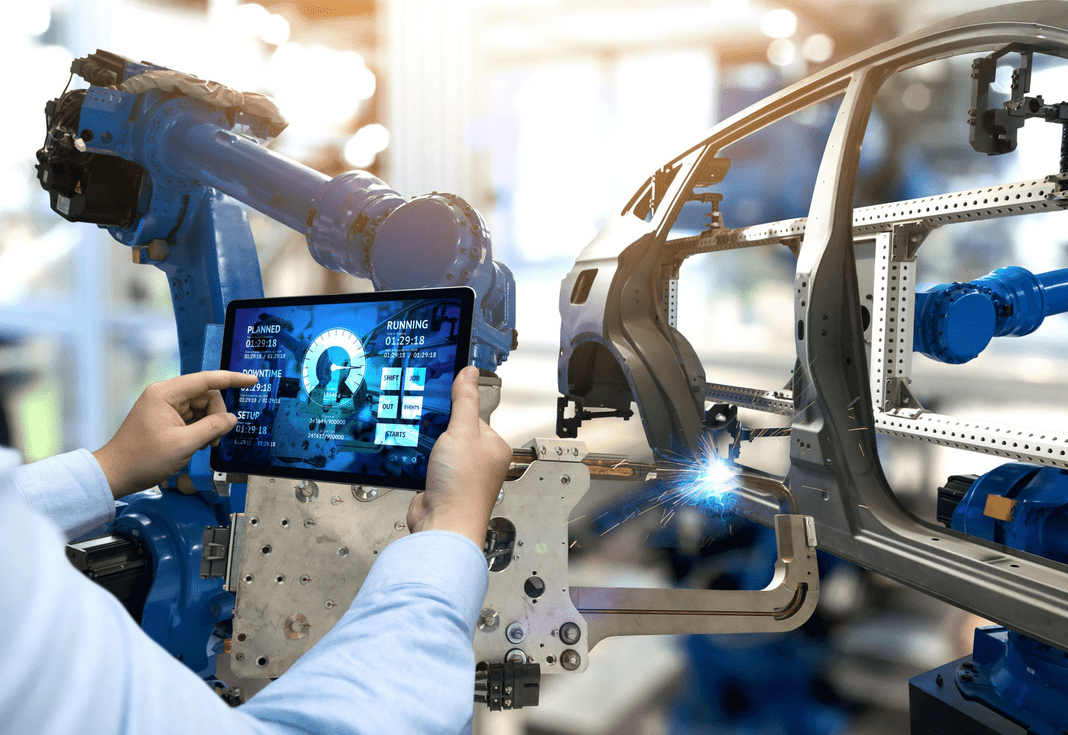For Tech and Automation, the Future Is Now

We are living in the future, and it’s happening right now. Artificial intelligence is here, and it is getting smarter by the day. Robots have jobs, building machinery and sometimes even delivering restaurant orders as they toil alongside humans in the day-to-day workplace. And vehicles drive themselves now, too.
The pace of technological advancement today is nothing short of staggering. Automation—once confined to a few sectors like automotive manufacturing—now touches nearly every corner of the modern workplace and workforce. This rapid evolution presents a paradox: it’s both exhilarating in its potential and daunting in its disruption. As leaders, it’s our responsibility to navigate this complexity with clarity, ensuring innovation enhances rather than displaces the human experience at work.
But contrary to the common narrative, automation (and technology advancements) aren’t simply taking jobs—it’s transforming them. Routine, repetitive tasks are increasingly handled by machines, which opens the door for employees to take on more strategic, creative, and value-added roles. This shift is not about replacing people; it’s about enabling them to do more of what humans do best: solve problems, think critically and connect in meaningful ways.
In this new reality, the true competitive advantage lies in our ability to adapt and upskill. Organizations that invest in their people—providing the training, tools, and pathways for career growth—will not only keep pace with innovation but lead it. Automation and technology is not the end of work; it’s the beginning of a more empowered, agile and human-centered workforce.
These technology-sector jobs are provided by the 3,784 tech businesses in our metropolitan area. That number of companies represents a large jump over the prior four years for a 69% increase. While the tech sector can be generally volatile, this increase is notable. Cincinnati’s growth and expanding number of businesses suggests the region has a strong economic future in tech. And although Cincinnati is not Silicon Valley, it is an integral part of Ohio’s growing Silicon Heartland.
As of 2023 there were 19,572 regional jobs in the sector, up 12% from 2019’s 17,401. And taking a look at the rapidly growing, in-demand technology skills provides insight into where jobs are headed. The top 10 in-demand skills are Agile Methodology (6,789 job postings), Project Management (6,272), SQL (Programming Language – 5,707), Computer Science (5,270), Java (Programming Language – 4,654), Automation (4,228), Marketing (3,260), Scrum (Software Development – 3,082), JavaScript (Programming Language – 3,067), and Application Programming Interface (API – 3,035).
In terms of financial impact, the tech industry’s gross regional product (GRP) was worth $4.81B, which represents 2.7% of the total GRP for the Cincinnati MSA. The tech industry’s 2023 GRP showed a large increase since 2018, too, with 48% growth over five years (outpacing the 40% growth of tech nationally).
Of course, much of this tech activity can be attributed to the automation subsector, and with the advent and wide-scale adoption of AI, the economic effect of autonomous mechanization is only going to become more significant locally.
What, exactly, do we mean by automation? It’s true that as automation rapidly develops, so too does our understanding of the terminology. But at this point we can break the concept down across a range of four levels: human-operation, automation (human controlled with a machine handling a specific function), semi-autonomous (the machine will perform a subset of tasks), and autonomous (a machine accomplishes all tasks without human interaction).
And yes, when we say “machines,” we also mean robots. Robotics manufacturing is a big deal here in the Cincinnati region, with 11% job growth over the past five years and a predicted 6% job growth in the next 5 years. Also, over the past five years there have been inventions which increased by 51%, patent filings by 62% and issued patents by 94%. Technological advances are imminent, and the local robotics industry is ready, representing $7.5 billion of our GRP and employing a workforce of 33.5k industry workers and 4,600 business locations, including FANUC, Festo, Qpoint, Yaskawa, Remtec and more.
Regional education institutions are answering the full-volume call for a robotics workforce, with schools such as Miami University, Northern Kentucky University, and the University of Cincinnati offering a variety of degree and certification programs in robotics and automated mechanics. The region is also home to many community colleges and workforce organizations such as Butler Tech, whose robotics and systems automation program the necessary training to meet the growing demand for skilled professionals in this sector.
Disruption can create unknows and uncertainty. So, as an organization tasked with creating employment opportunities, REDI Cincinnati is working to understand industry roles most and how it will be impacted by robotics, AI, and other automation.
We know that production roles are most at risk for replacement and have determined that potential transfer occupations include high-growth roles such as laborers and freight, stock, and material movers; foundry mold and coremakers; and sawing machine setters, operators. Similarly, we see hand packing and packaging roles at risk, but these skills can be transferable to roles such as grading, sorting and cleaning products. Similarly at-risk roles with high-opportunity replacements include welders, cutters, solderers and brazers; industrial truck and tractor operators; and multiple machine tool setters, operators, and tenders for metal and plastic manufacturing.
So technological advancement doesn’t have to mean we move fast and break local livelihoods and economic diversity. REDI Cincinnati, as the area’s economic development engine, is here to ensure that the technology and automation sectors can thrive via a robust education-to-employment pipeline and a favorable climate for tech businesses to establish or relocate operations.
The future is now, and we are excited about it. We can embrace robotics and automation, especially in areas where safety is a concern and enjoy a thriving economy full of new technological innovations. If you’d like to learn more about setting up shop in the Cincinnati MSA, contact our team to learn how you can grow your business in our 15-county, three-state region.
